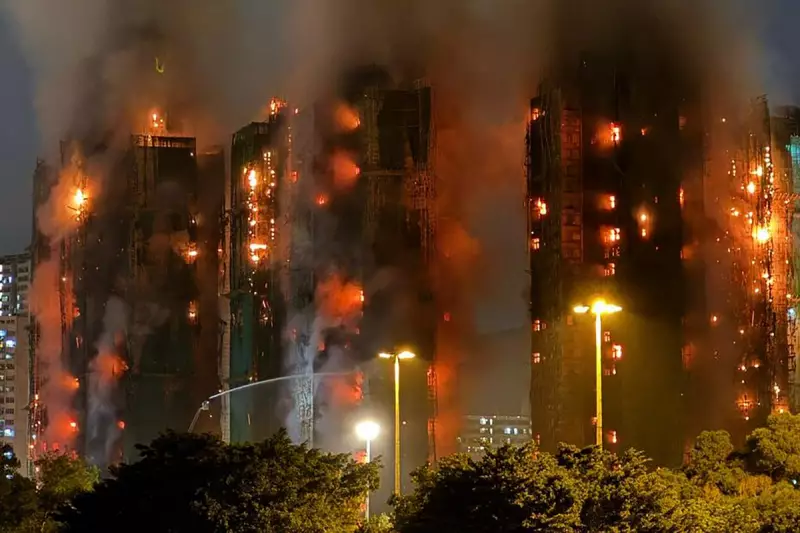
A catastrophic fire, the deadliest in Hong Kong since World War II, has claimed the lives of at least 44 people after tearing through a densely populated residential estate. The blaze, which broke out on Wednesday, 26 November 2025, at the Wang Fuk Court in the Tai Po district, also left nearly 280 individuals missing as it engulfed multiple high-rise towers.
How the Inferno Spread
Fire safety engineers have pinpointed the primary cause of the fire's rapid and devastating spread: the highly flammable bamboo and plastic scaffolding encasing the buildings. Alex Webb, a fire safety engineer at Australia’s CSIRO, explained that the inferno was likely driven by a combination of the plastic scaffolding encapsulation, plastic sheeting, polystyrene, and the bamboo structural scaffolding itself.
Strong winds fanned the flames, which leaped between seven buildings, with authorities not expecting to bring the fire under control until the end of Thursday. The district's dense development, home to over 4,600 people across 2,000 apartments in eight blocks, further contributed to the scale of the disaster.
Arrests and Echoes of Grenfell
In the wake of the tragedy, Hong Kong police arrested three men from a construction company, including two directors and an engineering consultant, on suspicion of manslaughter. Police superintendent Eileen Chung stated there was reason to believe the company's responsible parties were grossly negligent, leading to the uncontrollable fire and major casualties.
The incident has drawn immediate and stark comparisons to London’s Grenfell Tower inferno in 2017, which killed 72 people. Experts are now urgently calling for stricter oversight of construction materials in densely populated urban areas.
A Call for Modern Fire Safety
Specialists have detailed how the bamboo scaffolding acted as a perfect conduit for the flames. Anwar Orabi, a fire safety engineering lecturer at The University of Queensland, noted the scaffolding provided a 'highway' for the fire to travel vertically. Ehsan Noroozinejad of Western Sydney University added that the dry bamboo culms, wrapped in plastic mesh, created a ventilated ‘chimney’ that supported rapid flame spread.
The consensus among engineers is clear: bamboo scaffolding must be replaced with metal alternatives. Professor Guan Yeoh from the University of New South Wales, an expert in fire-resilient infrastructure, stated that mitigating this risk is feasible and called for the removal of outdated practices. "It’s time for change - to remove outdated practices and adopt modern methods of fire safety and protection," Dr Yeoh asserted.





